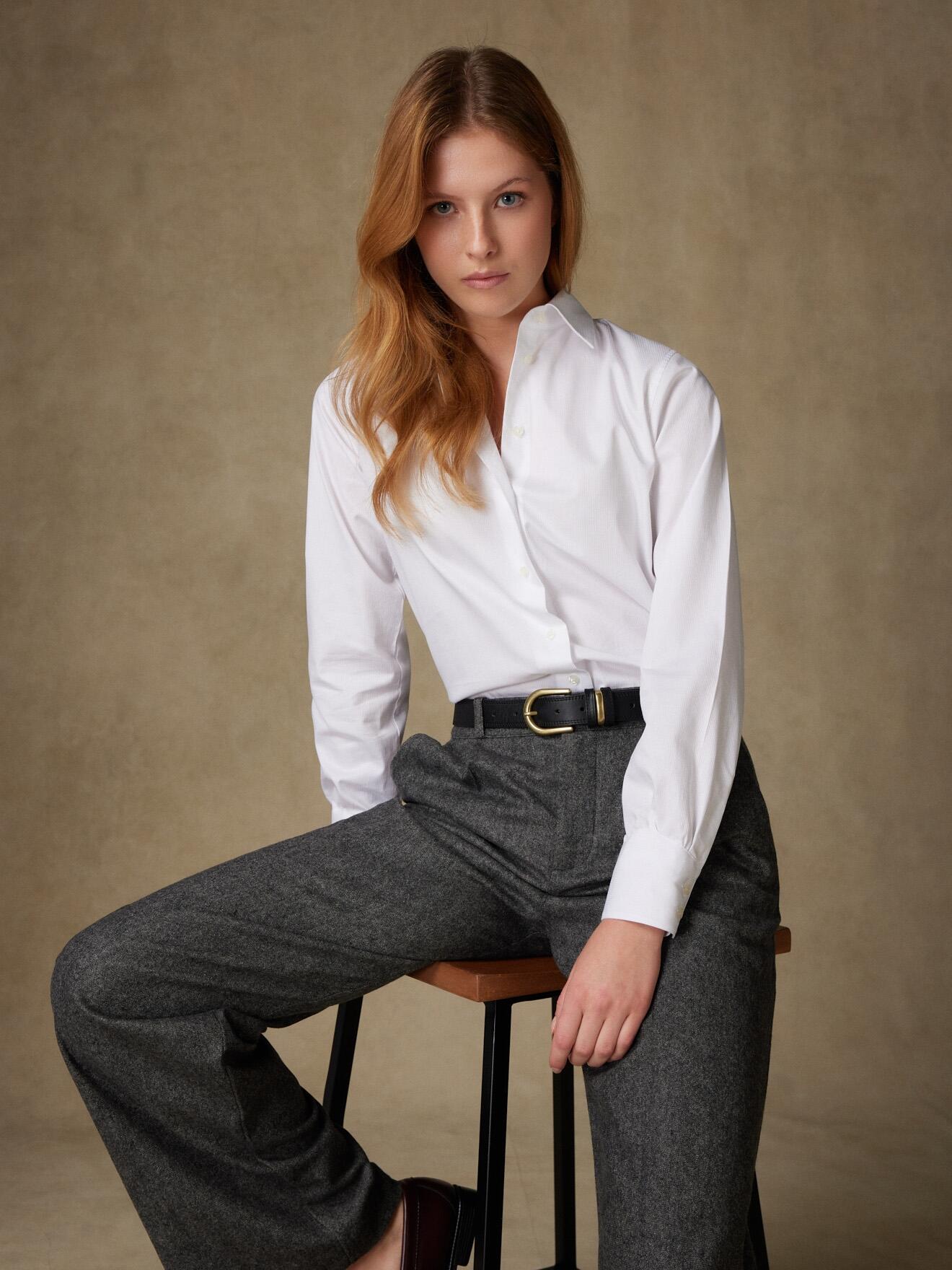Finally, Designers are Making Men’s Shirts for Women

Durell launched her brand in 2017 with “The Boyfriend” and has since expanded to four core styles, including “The Classic,” “The Weekend” and “The Chessie,” along with seasonal variations to total around 90 units. Each one retails between $150 and $345, depending on the fabric and silhouette. After seven years, not only is the brand profitable (last year it saw a 130 percent increase in sales), but celebrity fans like Meghan Markle, Florence Pugh and Emily Ratajkowski have worn the tops, often as Durell would: no-frills with jeans or paired with a blazer and simple trousers.
Men’s shirtmaking and the wider world of tailoring have a rich history of practicality, spiced with thoughtful detailing, if any. “Menswear has always existed to fulfil a function,” explains Durell. “It has pockets. It needs to function. Whereas womenswear historically was more about aesthetics.” She is part of a contingent of women who are reinventing the men’s shirt, capitalising on this under-explored and often gendered world of tailoring.
When Pip Durell, founder of London-based label With Nothing Underneath, designed her first shirt, she referenced a men’s style she already owned. “I literally cut it up,” she says, “pulled up the cuffs, took the bottom off and took the buttons off.” Vintage white button-down shirts are part of the former editor’s daily uniform, which she typically pairs with jeans and loafers. She was unimpressed with the women’s shirt options available to her and tired of overlooking sizing issues in the men’s department, so she decided to create her own version that combined impeccable tailoring with proportions that better suited the female body.
Marie Marot founded her eponymous Parisian label in 2017 on a similar basis. “A lot of women’s shirts seemed too feminized—too tight, too delicate, or lacking the structure that gives them character. They didn’t have the same sense of strength and timeless appeal that I admired in menswear,” she explains. Some of her recent styles feature a heavier, structured poplin fabric often relegated to menswear to create that same shape, plus English seams and semi-stiff collars “to offer our customers shirts that are both elegant and robust.” Since launching, Marot has debuted three collaborations with J. Crew. Her shirts have also been worn by Markle, and additionally by Kamala Harris, who sported her sky-blue Patti style on the presidential campaign trail.
So why not buy a men’s shirt? The most obvious answer is the fit. Women’s bodies can sometimes be the inverse of men’s — narrower at the shoulders and wider at the hips, with thicker collars and longer arms. Even if you want that “boyfriend” look, “there are ways to feminize an oversized fit,” says Olivia Villanti, founder of made-to-order shirt brand Chava Studio, which launched in Mexico City during the pandemic with the “perfect” relaxed tuxedo shirt. Chava is Mexican slang for “young woman.”
Villanti slightly reduces the cuffs and collars, focusing on the back crease for a subtle cocoon shape. She also works in a midweight inner lining for a casual touch. “Everything feels a little more feminine when it has a little bit of flow to it.” She acknowledges how silly binary terms are and insists that, when designing, she doesn’t consider a specific gender. It all comes down to style: Villanti recommends pairing some of Chava Studio’s oversized styles with a pair of fitted, slightly flared trousers.
Chava Studio focuses more on what Villanti calls the “dying” art form of tailoring, preserving the techniques used in his Mexico City atelier, some of which he acquired from his in-laws’ textile business. Customers can purchase a custom-made shirt through the website or schedule an in-person appointment for something personalized. “The whole tailoring experience of going and getting a custom-made shirt should be and continues to be viewed through the lens of a man’s lifestyle circa 1950,” he says, noting that he draws a lot of inspiration from that generation. And, with a high price point ranging from $345 to $525, they’re also made to last. “What makes us special is that we produce the way we do,” Villanti adds.
